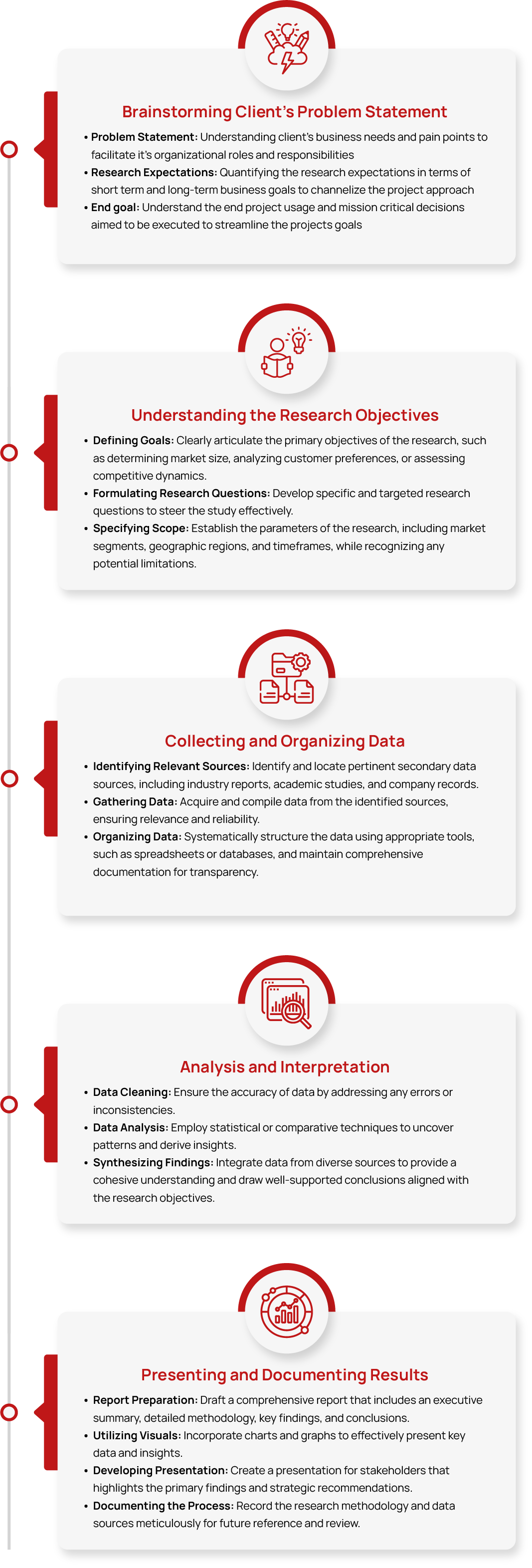Synthetic Fibers Market Size, Share, Growth & Trend Analysis Report, 2032
- Summary
- Market Landscape
- Methodology
- Table of Contents
Global Synthetic Fibers Market Size, Share, Growth, & Trend Analysis Report, By Type (Polyester, Nylon, Acrylics, Polyolefins), By End-use, By Region (North America, Europe, Asia Pacific, Latin America, Middle East & Africa) and Forecasts 2024 – 2032
Synthetic fibers are man-made fibers created through chemical processes, typically using raw materials like petroleum-based polymers. They are designed to mimic natural fibers but offer added benefits like strength, durability, and resistance to wrinkles, shrinking, and stains.
The Global Synthetic Fibers Market was valued at approximately USD XX billion in 2024 and is projected to reach USD XX billion by 2032, growing at a Compound Annual Growth Rate (CAGR) of more than 5% during the forecast period from 2025 to 2032.
Industry Trends
The synthetic fiber market is influenced by a mix of growth drivers, challenges, opportunities, and restraints. One of the primary drivers is the rising application of synthetic fibers in industries like clothing, automotive, home furnishing, and filtration.
These fibers are widely appreciated for their durability, affordability, and versatility. Additionally, the growing e-commerce sector has significantly boosted the demand for synthetic fiber-based products, particularly in packaging and apparel. Another critical factor supporting market growth is the high level of polyester production worldwide, as polyester remains a leading synthetic fiber.
Despite these trends in the synthetic fiber industry, the market faces challenges, such as the price volatility of raw materials, which can increase production costs and create uncertainty for manufacturers. At the same time, the availability of cost-effective alternative fibers, including natural and biodegradable options, adds competitive pressure.
However, the market also presents promising opportunities. The emergence of plant-regenerated synthetics and innovative manufacturing techniques highlights the industry's shift towards sustainable and environmentally friendly solutions.
Recent advancements in synthetic fiber production further enhance the potential for innovation, offering improved performance and reduced environmental impact. While challenges like cost-effective alternatives and raw material fluctuations persist, the market’s ability to adapt through advancements and diverse applications positions it for continued growth across various sectors.
Industry Expert's Opinion:
- Tamzin Rollason, RMIT’s School of Fashion & Textiles
“Plastics fabrics are incredibly durable. They're resistant to moisture, they are pretty much resistant to any sort of fungi, so they take thousands of years to break down and disappear out of our ecosystems."
TT Consultants’ Perspective
The Global Synthetic Fibers market as a dynamic and rapidly evolving industry driven by increasing demand across diverse sectors such as textiles, automotive, and construction. The market is witnessing growth due to advancements in material science, rising urbanization, and the shift towards durable, cost-effective, and lightweight alternatives.
However, challenges like environmental concerns and regulatory pressures necessitate innovation in sustainable fiber solutions. TT Consultants emphasizes leveraging data-driven insights to navigate market trends, identify growth opportunities, and optimize strategic decisions for stakeholders in this competitive landscape.
Market Segmentation
1. By Type (Polyester, Nylon, Acrylics, Polyolefins)
Polyester dominated the synthetic fibers market in 2024, contributing to nearly half of the global revenue. Its popularity is due to its excellent properties, including chemical and abrasion resistance, easy maintenance, wrinkle-free nature, and ability to retain shape. These qualities make it a preferred choice for clothing and other textiles.
The demand for polyester is growing in sectors like clothing, home furnishing, and industrial applications. Its extensive use in industrial products, such as yarns and ropes for car tires, safety belts, and conveyor belts, further drives its growth. This rising demand highlights the versatility of polyester in both domestic and industrial settings.
Nylon is another key synthetic fiber, widely used in home furnishing and automotive applications. Its popularity stems from the growing consumer interest in products like blankets, carpets, and upholstery, driven by a rising global population. This trend supports the market's expansion during the forecast period.
Other fibers, such as spandex and rayon, are gaining traction due to their applications in the sports and leisure industry. Spandex is favoured for sportswear and high-performance apparel, enhancing its market presence. With the growing accessibility of such products through retail and online platforms, the demand for synthetic fibers is expected to continue rising.
2. By Application (Clothing, Home Furnishing, Filtration and Others)
The global synthetic fibers market is divided into applications such as clothing, home furnishing, automotive, filtration, and others. Among these, clothing emerged as the leading segment in 2024, accounting for the largest market share. This dominance is largely due to the versatility, durability, and cost-effectiveness of synthetic fibers.
Materials like polyester and nylon are highly valued in the clothing industry for their strength, resilience, and ability to replicate the texture and appearance of natural fibers. Their affordability makes them accessible for producing a wide range of apparel, from casual wear to formal clothing. Additionally, synthetic fibers require minimal maintenance, resist wear and tear, and retain their quality over time, which makes them a preferred choice for both consumers and manufacturers.
This demand underscores the essential role of synthetic fibers in meeting the growing needs of the global clothing industry, ensuring they remain a cornerstone of textile production in the coming years.
3. By Region (North America, Europe, Asia Pacific, Latin America, Middle East & Africa)
Asia-Pacific (APAC) led the global synthetic fibers market in 2024, accounting for over 70% of the total revenue. This dominance is primarily due to the high production of polyester, nylon, acrylics, and other synthetic fibers in countries such as China, South Korea, Taiwan, India, and Japan.
The region's large population and increasing demand for clothing and home-furnishing products further contribute to its significant market share. With continued industrial growth and strong manufacturing capabilities, Asia-Pacific is expected to remain a key player in the market.
In North America, the clothing segment drives the demand for synthetic fibers, and this trend is anticipated to continue in the coming years. The growing preference for locally manufactured products and the increasing popularity of online shopping for clothing and home furnishing items are expected to support market growth in the region.
Europe is also experiencing steady growth in the synthetic fibers market. Growth is driven by robust manufacturing activities in countries like Italy, Germany, and Turkey. Additionally, the expanding use of synthetic fibers in the automotive industry for applications such as seat covers, cushions, drive belts, and airbags is further boosting the market in the region.
Central and South America are expected to witness significant growth in the synthetic fibers market over the forecast period. Factors such as increasing investments, expanding manufacturing facilities, and a focus on industries like clothing, automotive, and construction are driving this growth.
The region's availability of affordable labour and rising industrial activities are likely to enhance production capabilities, providing new opportunities for market expansion.
Competitive Scenario
Key competitors in the global synthetic fibers market are, Bombay Dyeing Inc., Reliance Industries Limited, Toray Chemical Korea, Inc., Teijin Limited, China Petrochemical Corporation, Mitsubishi Chemical Corporation, DuPont, Indorama Corporation, Asahi Kasei Corporation, Evonik, DSM, Arkema, Goodfellow, AdvanSix, Solvay and others.
Recent Developments and Strategic Activities:
- In December 2024, Sinopec announced the completion of the second-phase expansion at its Zhenhai Refinery, solidifying the Zhejiang Ningbo Petrochemical Base as China's largest petrochemical hub.
The expansion increases the refinery’s capacity to 40 million tons annually, contributing to the base's total refining capacity of 50 million tons per year. The $5.82 billion investment, which includes the addition of 18 new production units, enhances high-end material production and drives innovations in efficiency and sustainability.
This milestone strengthens Sinopec’s position as a global leader in the petrochemical industry. - In August 2024, Reliance Industries Limited (RIL) announced its plans to expand its vinyl and polyester production to meet the growing domestic demand. The company will set up integrated facilities with a total capacity of 1.5 million metric tonnes per annum (MMTPA) for polyvinyl chloride (PVC) and chlorinated PVC at Dahej and Nagothane by 2026-27.
Additionally, RIL plans to achieve a 1 MMTPA specialty polyester capacity by 2026-27 and a 3 MMTPA purified terephthalic acid (PTA) capacity by 2027. This expansion reflects RIL's commitment to meeting increasing demand in the domestic market.

Please fill out the form to request the ToC and gain access to detailed insights in the report.
Request Table of Contents







